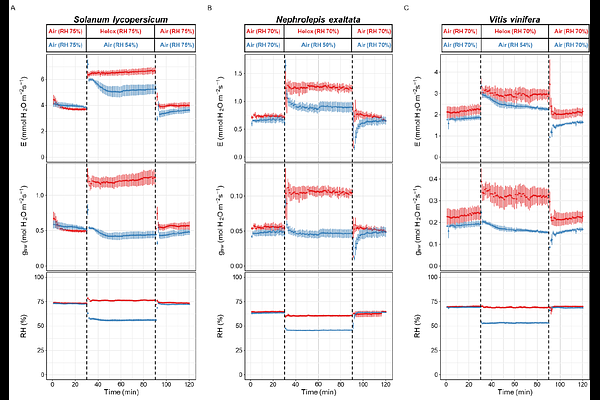Disentangling the stomatal response to transpiration and relative humidity

Disentangling the stomatal response to transpiration and relative humidity
Ben Zeev, B.; Shapira, O.; Yaaran, A.; Zait, Y.
AbstractStomatal responses to atmospheric conditions are critical for balancing plant CO2 gain with water loss. Yet, the question of whether stomata respond directly to humidity or to the rate of water loss (transpiration) remains unresolved due to the tight coupling between these variables. To decouple them, we manipulated water vapor diffusivity using Helox (21% O2, 79% He), where vapor diffuses 2.33 times faster than in air, and Argox (21% O2, 79% Ar), where it diffuses 0.75 times slower. This allows control of VPD and transpiration independent of one another while maintaining a constant leaf temperature. We investigated the stomatal conductance (gsw) responses to air and Helox in several plant species, including Solanum lycopersicum, Vitis vinifera, and the fern Nephrolepis exaltata. In addition, we tested the Commelina communis, with coupled gas exchange and real-time imaging of stomatal aperture in intact leaves. In all angiosperms tested, we observed that stomatal closing was triggered exclusively by reductions in RH rather than by transpiration increases. When transpiration increased, but relative humidity remained constant, we detected an increase in gsw without a following decrease in the experimental time span. Exposure to Argox without altering RH reduced transpiration, likely enabling restoration of epidermal turgor and inducing passive mechanical closure. However, the rate of stomatal closure under reduced RH was 2.35 times faster than that observed under Argox, suggesting that passive turgor-driven responses cannot fully explain the kinetics or extent of closure under dry air. This work provides direct experimental evidence for humidity-driven stomatal closure